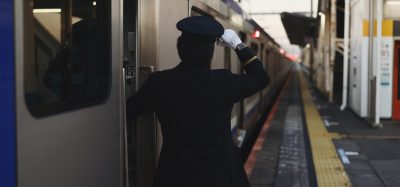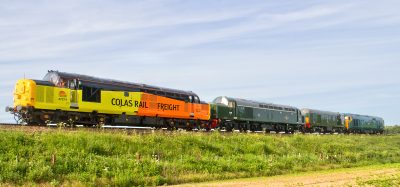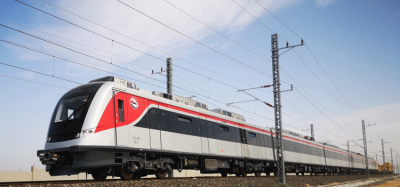Combatting the challenges within the rail industry
Posted: 17 December 2020 | Toni Shepherd | No comments yet
Toni Shepherd, Director of Sales at TRB Lightweight Structures, discusses the importance of equal opportunities for SMEs, why the rail sector should focus on diversifying its workforce and how the digitalisation of the industry is going to thrive in the near future.
What has been your career path so far, and how did this lead you to start a career in the rail sector?
I have a passion for customer service and believe that, by putting the customer first, you will build a strong partnership, and this is the difference between businesses that succeed and flourish and those that simply exist. I have been working in sales for seven years, with the last four years having been spent at TRB Lightweight Structures.
My current role is varied and covers many different aspects, but the main areas are establishing and building relationships with customers and showcasing TRB’s quality and knowledge to win new contracts to grow the business.
I joined TRB as the Sales Admin Manager and, during my time in the role, learnt a lot about the business and the sectors that TRB operate in, particularly the rail industry. When an opening came up for the Rail Sales Manager, I jumped at the chance. I enjoyed meeting people, going out and talking with the customers, negotiating and the general buzz when I successfully landed a new deal or made a connection with a new customer. It was noticeable that the rail industry is predominantly male, but things are now changing, and it is now seen as an exciting, technology-driven industry which is very much focused on the future. Things move fast in TRB and, after a year, the Director of Sales opportunity presented itself, one that was too good to miss, and one that would still see me covering the rail sector. I have been in this role since February 2020. It has been interesting and challenging, with the COVID-19 pandemic changing sales – as we were no longer going out and meeting customers, things changed overnight, and I found myself networking via Zoom or Google Hangouts, so I have had to adapt fast to a new way of working.
What does your current job involve?
My current role is varied and covers many different aspects, but the main areas are establishing and building relationships with customers and showcasing TRB’s quality and knowledge to win new contracts to grow the business. To help achieve this, I also manage an excellent team, who has extensive experience in the rail industry and excels at delivering exceptional customer service.
What aspects do you find the most challenging and rewarding, and why?
TRB is very environmentally focused, and the reason behind the focus on producing lightweight components is to reduce energy consumption in order to have a direct impact on the reduction of emissions.
The people of today have less time, as they are bombarded with messages from many channels all day (phone, email, calls, direct mail, internal distractions etc.), so getting a response is more difficult. The challenge is standing out from the crowd. Part of what makes TRB stand out is we are very environmentally focused, and the reason behind the focus on producing lightweight components is to reduce energy consumption in order to have a direct impact on the reduction of emissions.
I am fortunate that every day is a different experience and challenge. One day may include researching and meeting new clients, the next fostering a relationship with existing clients or devising strategies to increase sales. My role provides me with the opportunity for professional growth by developing my skills and learning new things.
The skills you develop, the people you meet and the things you learn outweigh the challenges.
What challenges/issues about the rail industry have you identified?
I believe that small and medium enterprises (SMEs) are a vital part of Britain’s economy and contribute significantly to the rail industry. One of the challenges that we face as an SME is the lack of visibility of the up-and-coming pipeline; if this could be made visible to the broader audience at a lower level, this would make it easier to prepare for potential opportunities.
Another challenge is that, after the potential supplier has submitted their tender before it is awarded, there is a high risk of substitution. This makes things difficult, as you may have to re-submit your tender again, or the parts that you have quoted for may not even be valid.
The skills you develop, the people you meet and the things you learn outweigh the challenges.
I have found during the contract negotiations stage that some of the clauses and conditions could be very damaging to an SME and are all in favour of the much larger corporations. This sometimes means that the clauses are not something that an SME can sign up to, as we also have to protect our own company, so we cannot always pitch for the work.
Accessing the international markets is hard to break into; they tend to be very price-driven, which is partly due to the fact that labour is cheaper. TRB’s new high-volume automated manufacturing process will allow us to be much more competitive, as we will not be reliant on labour, as the majority of the work is automated.
How do you play a part in helping the industry overcome these?
To overcome some of the challenges, I have found that making connections through rail events, joining working groups and attending ‘Meet the Buyer’ events helps with the visibility of the pipeline and, the earlier that you can engage with a potential customer, the more likely it is that you can start to build the relationship. I have found it very beneficial to work with the various rail associations – including RIA, Rail Forum Midlands and Rail Association – as attending their events allows me to meet other suppliers, potential customers and other professionals in the rail industry.
What do you think makes TRB stand out from your competitors in the rail industry?
TRB has over 40 years’ experience in manufacturing high-quality rail interiors, door leaves and detrainment systems, and is able to work with metal bonded structures and also composite materials.
TRB has over 40 years’ experience in manufacturing high-quality rail interiors, door leaves and detrainment systems, and is able to work with metal bonded structures and also composite materials. We are able to provide a complete service, from design, material selection advice, validation, manufacture and onsite fitting, if required.
Our rail team are exceptional, some of our key people have been in the industry for over 20 years, they bring this wealth of knowledge and love of the industry to every project we undertake.
To what extent do you think more needs to be done to diversify the workforce in the rail sector?
I think the rail sector is an industry that women can thrive in, it has interesting, flexible and diverse roles – but it needs to showcase this more and make women aware of what is available to attract them to the industry. We are starting to see changes now, with more women taking positions throughout the industry.
It is important for women to be respected and valued within the business that they work in. If people are engaged and feel valued, they will always go the extra mile.
The world is changing, and technology is at the forefront of that. The rail sector should be looking at fresh minds who have been educated in today’s society to keep up with the ongoing competitive technology and advances in innovation.
What do you think will be the biggest trends for the rail industry in the next two years?
The rail sector is already embracing technology, but I feel that the focus on digitalisation will increase significantly in the next two years. People want to feel connected at all times, and this includes when travelling.
Decarbonisation and environmental protection is a focus for not just the rail industry, but for all transportation. The next few years are going to see big changes in how the rail industry moves forward to adopt electric and hydrogen as a way to power trains. This in itself is a step-change, but also adopting lighter car-body frames, which are being developed by the industry, as lighter trains means less energy required to power them.
The rail sector is already embracing technology, but I feel that the focus on digitalisation will increase significantly in the next two years.
Related topics
Digitalisation, Regulation & Legislation, The Workforce, Women in Rail








